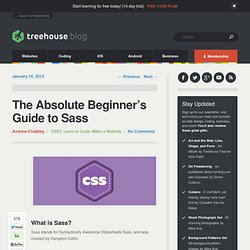

The Importance Of HTML5 Sectioning Elements. Advertisement Whatever you call them — blocks, boxes, areas, regions — we’ve been dividing our Web pages into visible sections for well over a decade.

The problem is, we’ve never had the right tools to do so. While our interfaces look all the world like grids, the underlying structure has been cobbled together from numbered headings and unsemantic helper elements; an unbridled stream of content at odds with its own box-like appearance. Because we can make our <div>s look but not behave like sections, the experience for assistive technology (AT) users and data-mining software is quite different from the experience enjoyed by those gifted with sight.
Now that HTML5 has finally made sectioning elements available, many of us greet them with great reluctance. Make no mistake: Sectioning elements help you improve document structure, and they’re in the spec’ to stay. Making Websites *Bites tongue* Web Standards As I shall demonstrate, the <div> is the ultimate Graphic Design tool. Why Is This So? The Absolute Beginner's Guide to Sass. What is Sass?

Sass stands for Syntactically Awesome Stylesheets Sass, and was created by Hampton Catlin. It’s a way to simplify your CSS workflow, making development and maintenance tasks easier. For instance, have you ever had to do a find-and-replace in your stylesheet to change a particular HEX color for a particular indecisive client? Or had to open up the calculator app to figure out a column width in a multi-column design? Sass introduces new concepts such as variables, mixins, nestings and selector inheritance. Sass looks similar to CSS, but without the semi-colons and curly braces. Given the following CSS: You’d write the following in Sass: #skyscraper_ad display: block width: 120px height: 600px #leaderboard_ad display: block width: 728px height: 90px Sass uses two-space indentations to define code nesting. Now that you see how Sass is written, let’s look at some of the things that makes Sass so awesome.
Variables $red: #FF4848 Nesting There are two types of nesting. Selector Nesting Mixins. The BEST of You The Designer for 2012. Articles, News December 31, 2012 Hello creatives!

Finally, we’re down to the last day of the year. Most of you might be busy in preparing for your own unique and creative ways of celebrating New Year. While some might be preparing for 2013, it is always good to look back at the great things that happened over the last 364 days. That is why, for the last day of 2012, we bring you a list of YTD’s best throughout the year featuring the top inspirational posts, resources and freebies.
We ranked all the posts and selected the top 12 based from your visits and pageviews. Random Doodles Free Photoshop Brushes A cool set of Photoshop brushes we shared with you last July snatched the 12th spot on our list. The Minimalist Art of Pictograms An inspirational article showcasing the minimalist pictograms of some artists like Viktor Hertz and Teddy Hahn made it to the top 11. Infographic: Web Designer/Developer Salaries Around the World Vector Art Free Download – 12 Web Badges So there you have it guys! 23+ Useful Navigation, Menu & Button Photoshop Tutorials. 25+ Must See CSS3 & HTML5 Tutorials & Cheat Sheets.